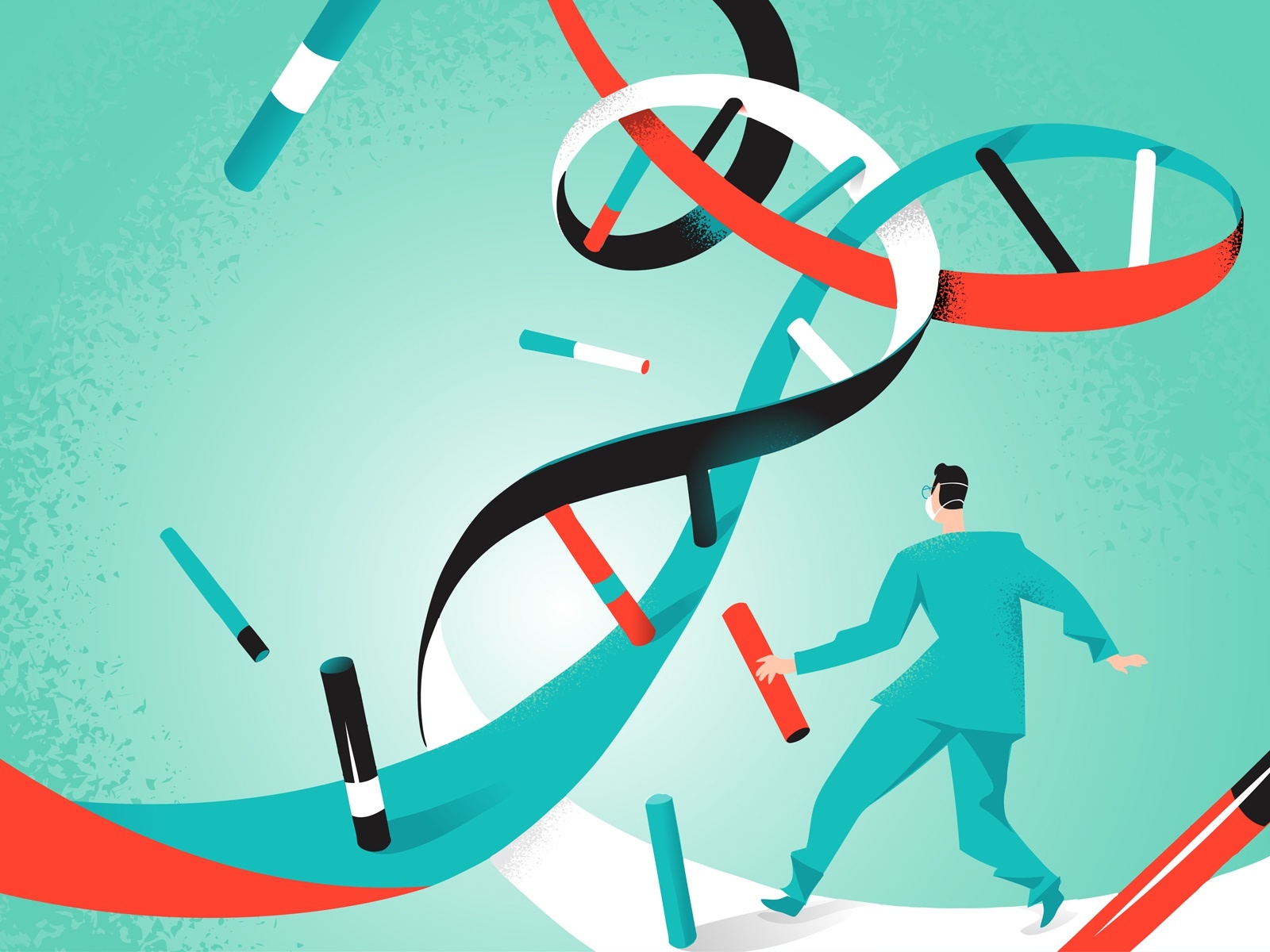Being a medical professional is one of those occupations that require constant continuous improvement of knowledge and skills. New research and development create new best practices that call for instant retraining and further education. That doesn’t ever stop. Healthcare relies too much on the development of technologies to remain the same for long. Remember a “Scrubs” episode where Dr. Kelso has a talk on the subject with that other doctor played by Dick Van Dyke?
Thankfully, there’s a way to ease the educational process and make it more engaging for students as well as for instructors — you can use special mobile apps for doctors, in other words, use the benefits of e-learning in healthcare. There are several areas in healthcare, where mobile devices and apps make medical professionals’ lives easier. They are used for consulting and communication, referencing and data collection, maintaining health records, etc. And, not least, for education.
As a mobile app development company with an experience of building educational platforms, we know how to make e-learning apps that are fast, easy-to-use, beautiful, and tailored to the needs of your industry. Healthcare app development is one of our current priorities. Take a look at our 2020 guide on healthcare app development where we discuss its most important aspects from market overview to current trends.
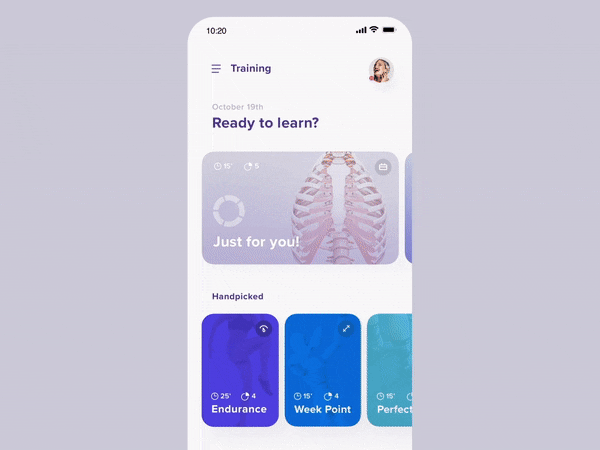
Anatomic – Exercises Interaction by Maciej Dyjak [1]
Advantages of educational health apps
Traditionally, medical professionals relied on frequenting offline training sessions. But this method presents a set of difficulties:
- it’s time-consuming, so it might be difficult for medical workers to find a few spare days inside their busy schedules
- it takes valuable specialists off their workplaces which is harmful to business
- it’s expensive, taking into account the costs of attending an event, accommodation and air travel
- sometimes it’s impossible at all, as we all have experienced during the pandemics.
Using a custom mobile app created for educational purposes can help overcome these problems. Seeing how deeply mobile devices are ingrained in our lives, it makes sense that mobile learning is among the fastest-growing areas of e-learning in general. Medicine too was strongly affected by the use of mobile devices and apps. Statistics show that 4 out of 5 healthcare professionals use mobile devices to assist with their everyday work.
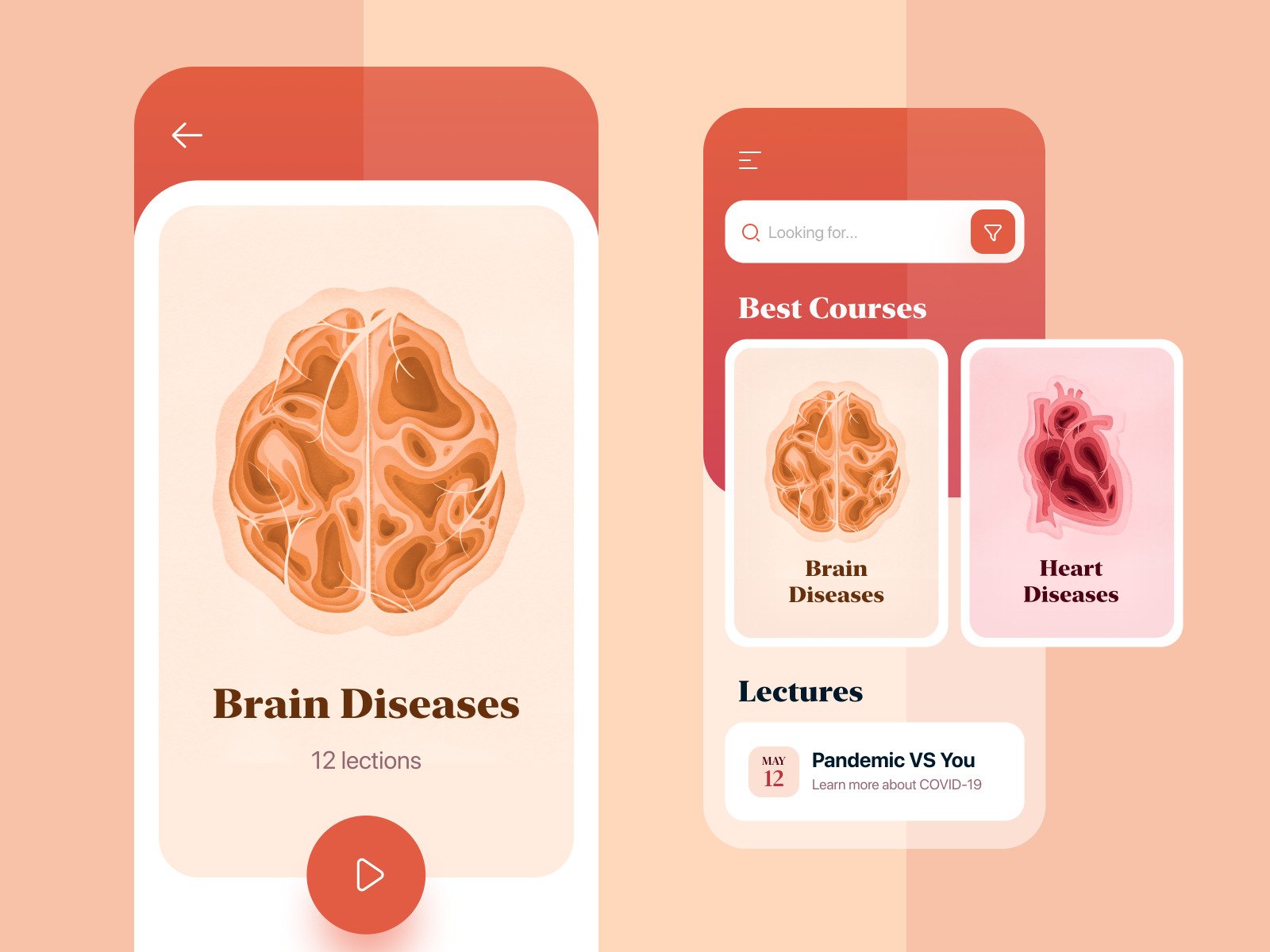
Medical learning platform by Lena Brusenska [2]
- Greater convenience. E-learning gives the opportunity to study at the time and place of students’ choosing and using any type of device, making the whole process easier, faster, and more convenient. If it’s a podcast, for example, it’s possible to avoid interrupting the learning process even while commuting or being at home. This year, many students volunteered to work at hospitals due to pandemics, so they had little time to learn in the traditional manner and greatly benefited from using their phones instead.
- Better flexibility. The regular introduction of new treatments and compliance regulations explains the constant nature of changes and upgrades in the healthcare industry. In the case of e-learning platforms, it’s much easier to modify the curriculums quicker.
- Greater availability. Medical education is expensive. E-learning programs are also far less costly to establish and maintain than the offline ones. They prevent the participants from spending money on traveling and help to avoid losses that clinics suffer when valuable specialists have to be away from work.
- Instant feedback. Using electronic devices for educational purposes makes for easier continuous communication and interaction between learners and tutors or other learners.
- Greater speed. Students can skip parts they already know thus optimizing the educational process and making it faster.
- Micro-training. It’s a great trend that is present in many educational sectors from physical activities to learning foreign languages. The point of micro-training is short sessions of maximum activity with equally short breaks.
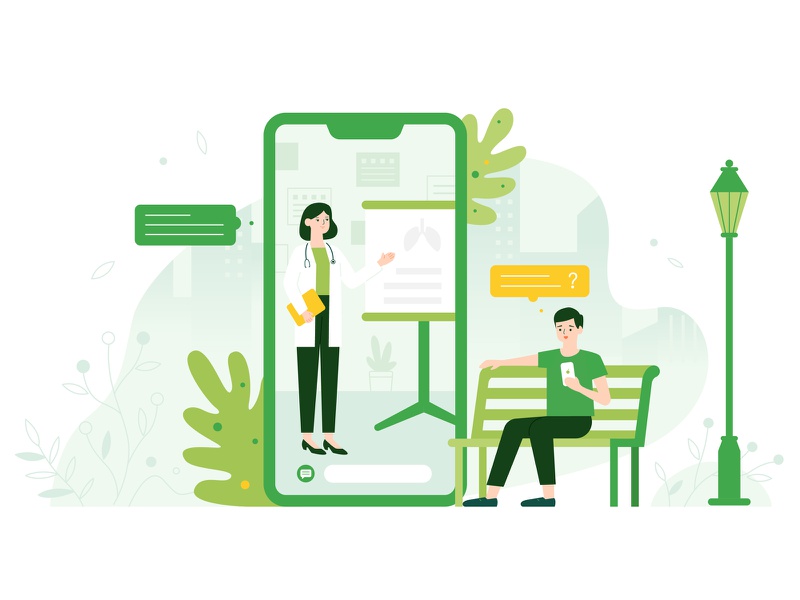
Classroom teaching based on cloud service by Muffin [3]
Types of educational medical apps
Depending on the general purpose and features, your e-learning medical app will belong to one of several basic categories. You can either build a separate mobile education app or make it a reinforcement to an e-learning platform.
Educational platforms
There is a culture of continuing medical education (CME) in the healthcare industry that exists to ensure constant progress in practice. Failing to deliver the best results possible using the best practices can lead to patients’ health deterioration or even more grave results. It would also be harmful for a healthcare organization meaning possible lawsuits and heavy fines. To avoid it, as said earlier, medical staff needs to be on top of the situation.
An educational platform is a customizable resource that contains learning materials. Such platforms are usually web healthcare education solutions with complementing mobile applications for students and cloud-based data exchange.
The list of popular medical educational platforms includes projects like Osmosis — a learning resource that contains a library with more than 1,300 videos, 15,000 flashcards, and 8,000 case questions that cover various medical topics.
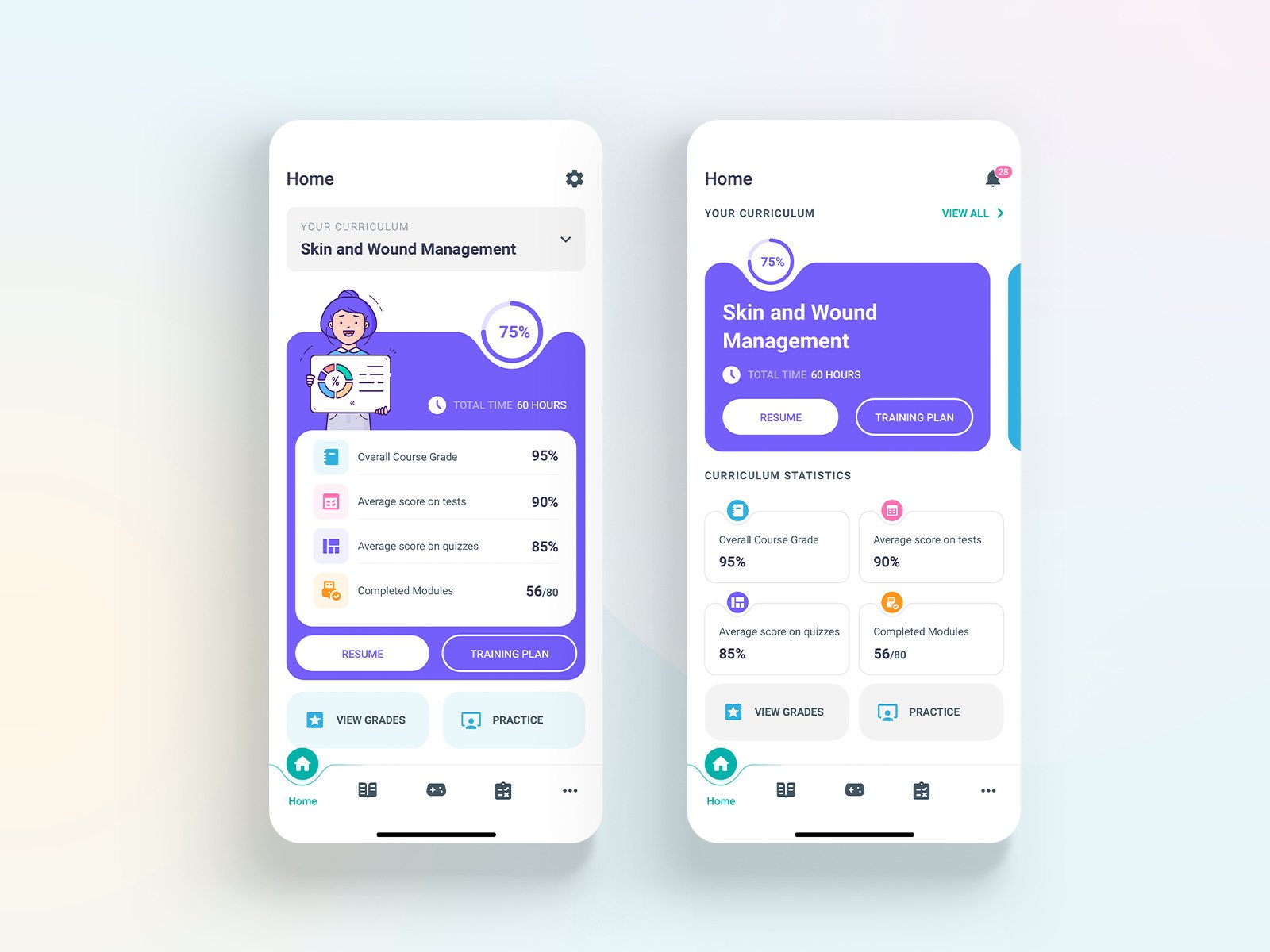
Learning App – Home screen by Hoang [4]
For example, this short video offers to play the spot-a-mistake game about failing to comply with the HIPAA regulation that can easily occur in any medical office:
Medical reference apps
Some healthcare learning apps are present on the phones of the majority of doctors and medical students — these are so-called reference apps that are used on a daily basis.
They contain reference materials for doctors of various profiles, medication specifications, identifiers of pills, medical news, etc. Sometimes there are special calculators, for example, for body mass index, infusion, renal excretory function. In addition, such contain information on the side effects of drugs.
The most popular reference e-learning apps for healthcare practitioners are Medscape Mobile, Human Anatomy Atlas, and Brainscape.
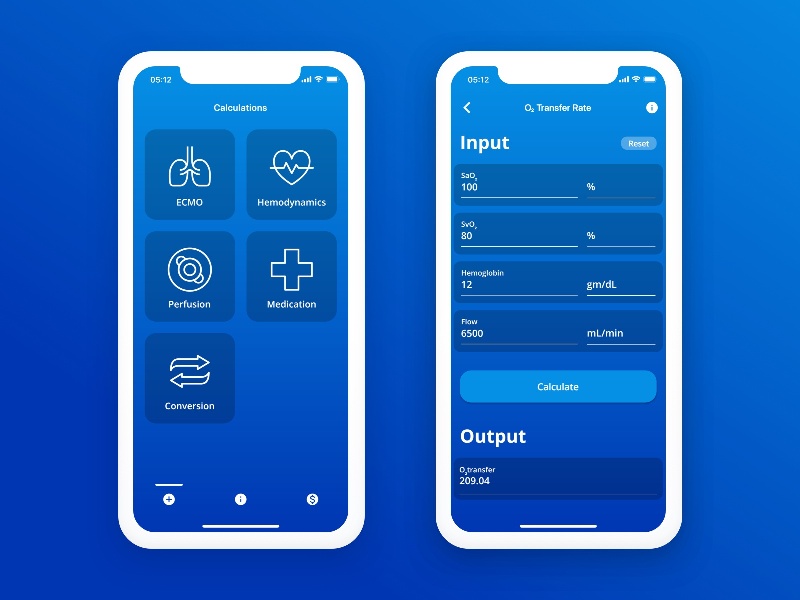
MediWeb — Medical Calculators by Filip Staszek [5]
Virtual and augmented reality simulations
Mobile technology has changed the way people think about academic learning. For instance, the newest methods of mastering knowledge in virtual reality have become available.
It’s been known for a long time that the knowledge gained from experience is the most vivid. However, in the case of medicine, it might be difficult to get real-life experience every time you’d like it. Nowadays, many students prefer medical learning apps invented on the basis of technologies that visualize knowledge.
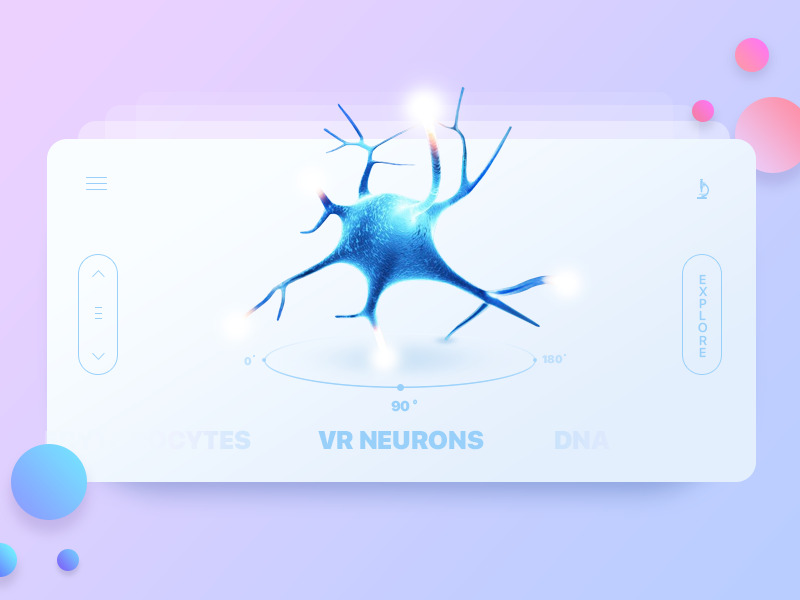
VR Anatomic Application by Daniil[6]
VR’s ability to catch and hold the attention of students during the educational process is unprecedented. Due to the immersive nature of virtual reality, it becomes much easier to get and store new information.
There are many free or paid medicine-related apps to explore the complex problems with the help of VR/AR mobile learning technologies in healthcare, like Touch Surgery, InCell VR, Airway EX Virtual Surgery Simulator App, and others.
3D imaging and 3D MOA (Mechanism of Action)
One of the aspects of healthcare education is knowing exactly how internal organs function. The developers of educational medical applications can digitally visualize internal organs, thus making the compulsory practice on cadavers almost obsolete. 3D imaging makes studying less expensive and more convenient, both for students and for experienced medical personnel.
A separate type of 3D imaging solution is an MOA (Mechanism of Action). In other words, it means showing how various processes happen inside a human organism, how different systems are connected with each other, and what changes occur when a particular substance is introduced to a body.
One example of a 3D imaging app is the free and popular Complete Anatomy 2021 app that offers to experience the most advanced anatomy mobile platform available today.
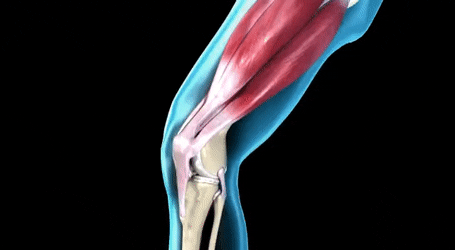
Source: Youtube [7]
Webinar platforms
Webinars are still a simple yet powerful tool, as well as the most popular one for education in healthcare. The ability to gather a large number of students in one place is extremely useful in one situation and can be indispensable in another as the COVID-19 pandemics showed us.
The main advantage of webinars is interactivity — the ability to discuss newly received information here and now.
Mobile solutions about e-learning for healthcare professionals like Docquity make use of webinars as one of their features.
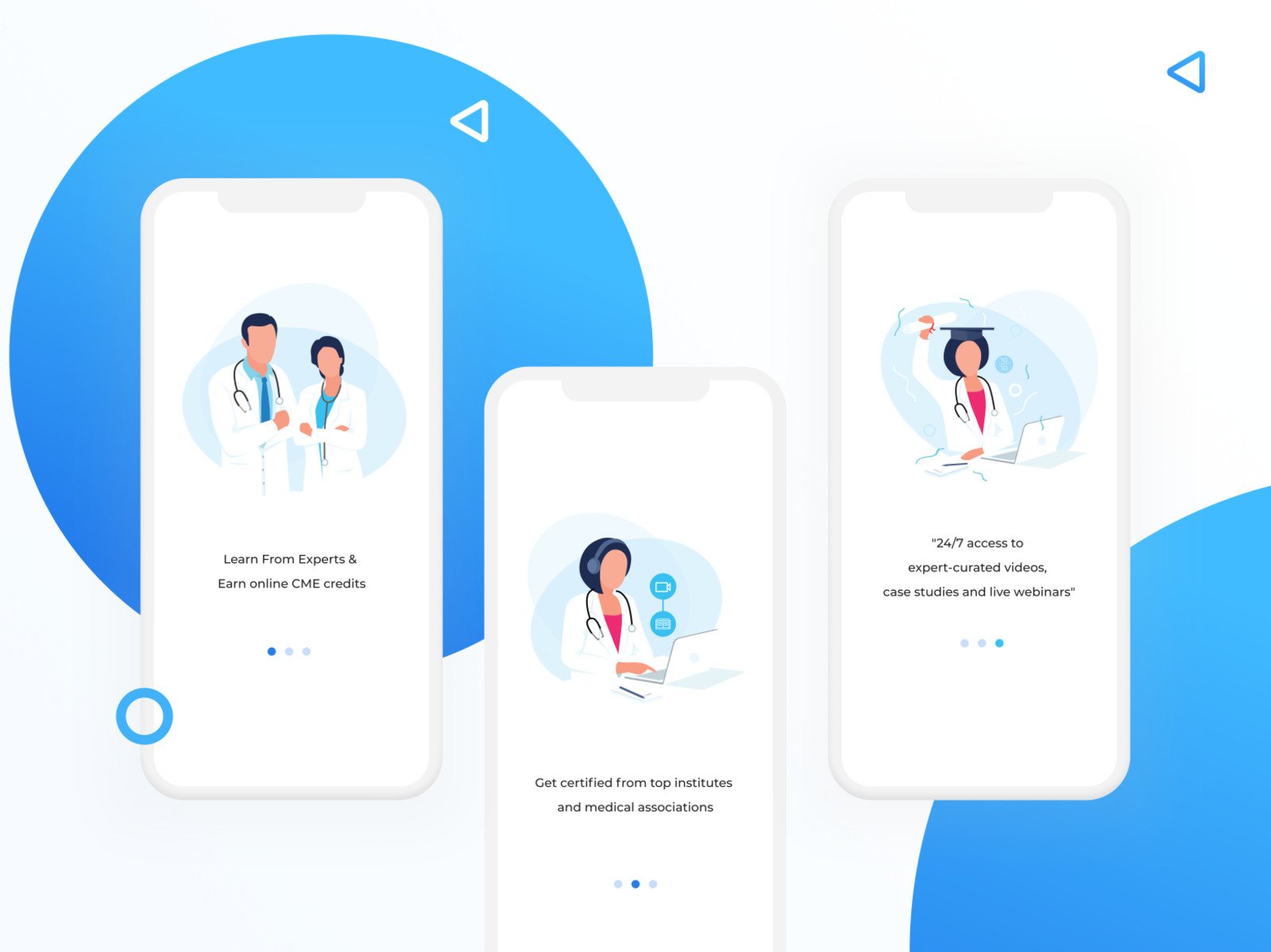
Walkthrough screens – Medical Learning App by prajil [8]
Possibilities and features
The transition to remote learning has posed a lot of challenges for education systems of any level and sector. Educational apps need to contain different features to make an e-learning process faster, easier, more productive, and at all possible.
Virtual classrooms
These couldn’t be more relevant in today’s remote realities. Virtual classrooms are designed for a more comfortable student-tutor interaction, optimizing work, and saving time.
Online assessments
Online assessments should be undertaken with the same level of care that you put into creating the whole content.
You can check out what educational modules a student has passed, make a measurement of their performance, and determine what they still want or need to learn with online interviews, dialog simulations, online quizzes, drag-and-drop activities, etc.
System simulations
First-person healthcare industry training simulations can be used by employees or students, along with practical and theoretical tests that an instructor poses online. That way, knowledge gaps can be filled much faster at the same time saving everybody’s time and money as participants don’t need to attend such simulations IRL.
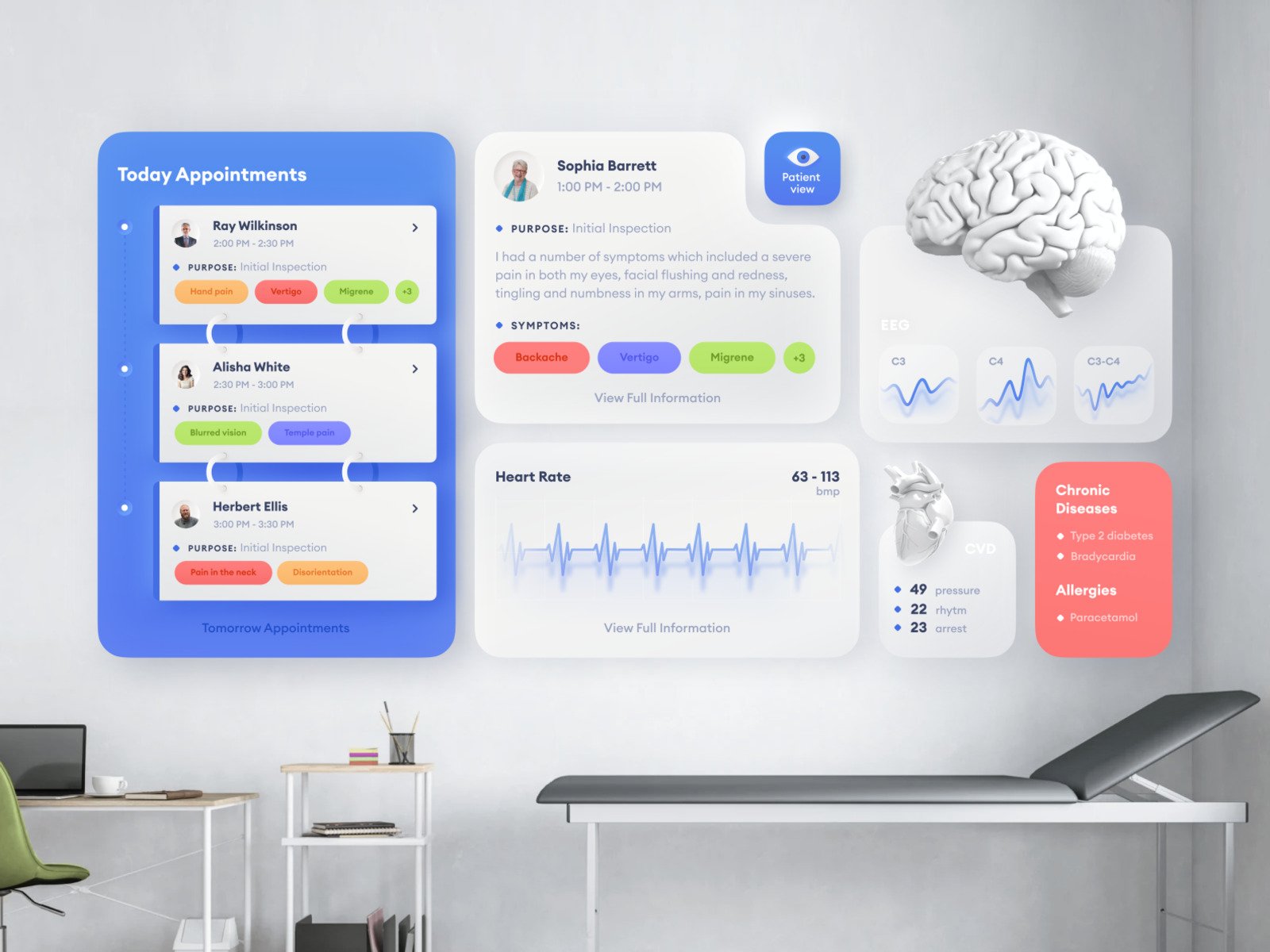
Medical AR by Toma Li [9]
Gamification
Gamification is one of the most effective tools for engaging students in any educational process, including medicine. For example, you can publicly display the students’ scores, and introduce a rating system, or offer tasks of varying difficulty for certain “prices” that would affect the ratings. All this makes for gamification. In other words, it introduces elements of competition.
Streaming videos and other multimedia elements
Students can observe experiments and masterclasses, explanations of complex concepts, etc. watching illustrative videos. No amount of reference materials is viable without knowing how to implement it in real life. The use of educational streams in medicine helps interns and doctors-in-training develop their skills giving invaluable knowledge of how to use them in practice.
Clear user-interface
Ease of use and simplicity is the basis of any good educational mobile application design. Effective design quickly communicates the benefits of your product and brand to users and doesn’t distract from educational materials.
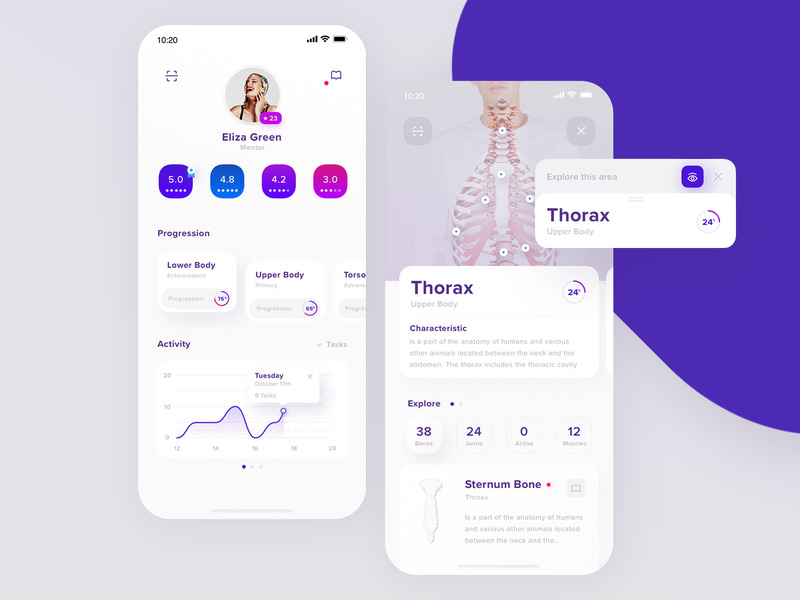
Anatomic – Profile & Explore by Maciej Dyjak [1]
The future of e-learning in mHealth
E-learning in healthcare has evolved from simple text-based learning resources to interactive, multimedia, and social learning platforms. One can claim that the future of e-learning is primarily mobile. Earlier, e-learning content for healthcare was developed with the general purpose of using it on a desktop, leaving the mobile redesigning for later. Now and more progressively in the future, learners will expect educational programs to be tailored above all to mobile phones.
Mobile learning offers much potential. Judging by the tendencies of educational apps development, It looks like there will be even a greater number of available formats, more interactivity, and the use of gamification techniques, as well as more immersive simulations and improved personalization.
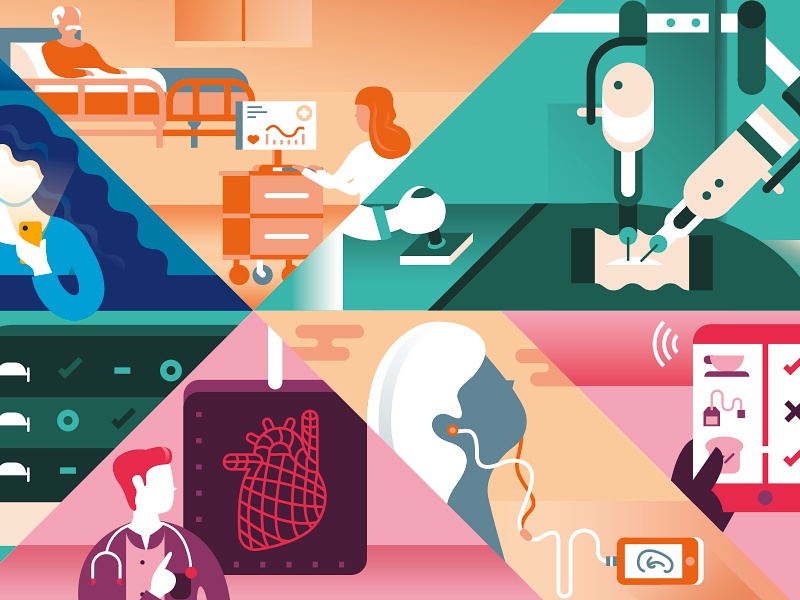
Details No.2 – Medicine Future & Today by Jens Amende [10]
In conclusion
2020 will be remembered for pandemics when there were times we were glued to the screens seeking news on the situation with global healthcare.
Every week there’s something in the news about research and development in the healthcare industry, not only about COVID-19. With this amount of research and technology development, the healthcare sector is bound to change constantly. Continuous education is vital to any healthcare professional to maintain and improve their skills and knowledge.
Do you need a new healthcare e-learning solution for your business? We at Shakuro adhere to an innovative approach and believe that educational apps for medical students and doctors should be primarily useful and trustworthy. We are an experienced mobile app development company with hundreds of successfully completed projects. We know what it takes to produce a product that would yield results. You can check dozens of unbiased reviews on our Clutch page. Elevate your business to new heights with a successful healthcare app, contact us now for a free consultation.
* * *
Functionality and usefulness are of the most important for users. But if the design doesn’t cut it, the app will soon get deleted. Besides, functionality IS a part of the design. In the next article, we are going to discuss the intricacies of design in healthcare app development.
Recommended articles:
- Healthcare Mobile App Development: Why, How, and How Much
- Why You Need An App For Your Healthcare Business
- Features and Challenges of Healthcare App Development
- Trends in Healthcare App Development
- How To Design A Healthcare App That Makes Its Users Happier
Illustrations by:
